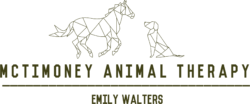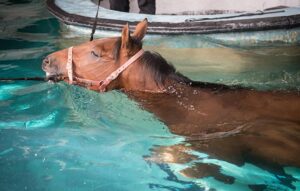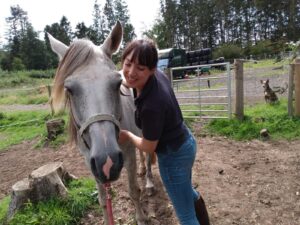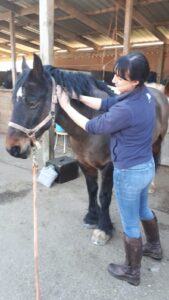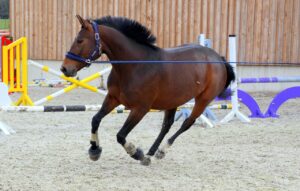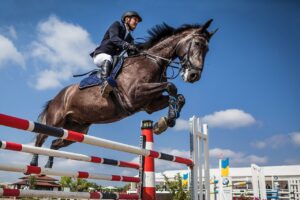There are lots of different types of Equine Sports Therapy such as heat, ice, massage, chiropractic, physiotherapy, massage pads, electrical stimulation, and magnetic fields. I will discuss a few of these in this article.
Types of Equine Sports Therapy
Heat and Ice
Ice is for injuries. It reduces the painful inflammatory response by calming the hot, inflamed, damaged tissue. The inflammatory response is mostly a good thing as it helps tissue heal, but the body can get carried away so ice can mediate the response and so reduce pain. Examples are freshly pulled muscles, ligament or tendon strain.
Cold hosing is great to reduce swelling and inflammation in tendons or ligaments in the legs, and a cold gel pack wrapped in a towel is useful for other areas. Apply the cold for 10-15 minutes every 2 hours.
Heat should be used in chronic pain and in muscles. It is excellent for soothing stiffness and aches. It’s also good to use heat on trigger points and sore muscles to ease aches and pains.
Hot packs wrapped in towels can be used on horses and for 15-20 minutes.
Equine Sports Therapy Massage
Equine Massage is the therapeutic application of professional sports massage techniques applied to the horse. I have an excellent understanding of equine anatomy with particular interest in the bones. joints and muscles of the horse, including functionality.
McTimoney Chiropractic
A treatment is required if your horse has a spinal or pelvic misalignment or fixation. Find out if your horse may benefit from a McTimoney Horse Chiropractor treatment. These signs can be subtle or obvious with signs of inflammation, tension, heat and tenderness along the spinal column. When a fixation occurs within a joint, the joint becomes locked at some point within its range of movement placing pressure on the spinal cord, which leads to dysfunction in the part of the body that the nerve affects.
The purpose of a chiropractic adjustment is to free the joint by releasing the muscle tension locking it in place and when the pressure is released from the spinal cord the body’s normal nerve function can be restored. The whole of your horse’s body will be treated. It uses short-lever, high-velocity, low-amplitude controlled thrusts to very specific anatomical points and articulations to create a therapeutic response in the horse and improve function of the joint, nerves and surrounding musculature.
Equine Physiotherapy
Physiotherapists treat a wide variety of musculoskeletal problems and they manipulate and mobilise joints and soft tissue, use electro therapies such as ultrasound and laser therapy, and prescribe exercise regimes. These practitioners use a hands-on approach to promote passive stretching, weight-shifting and the activation of spinal reflexes — exercises that are also helpful for post-operative rehabilitation. Many of the techniques and exercises physiotherapists use are also thought to help to increase flexibility and strengthen core muscles.
Massage Pads
Studies have shown that using a massage pad before and after exercising your horse can not only improve stride length and speed, but can speed up warm up and cool down periods leading to a better performance.
As a McTimoney Equine Chiropractor and massage therapist I find that clients that use a massage pad regularly on their horses have a reduction in tension, tightness and soreness along their horses back. It’s an excellent way to improve your horse’s muscle tone and increase functionality between visits.
Book a McTimoney Equine Chiropractic Treatment
Areas covered in UK: Worcestershire and surrounding counties.
Book a McTimoney Equine Chiropractic Treatment or Call Emily Walters on 07983 565 438
